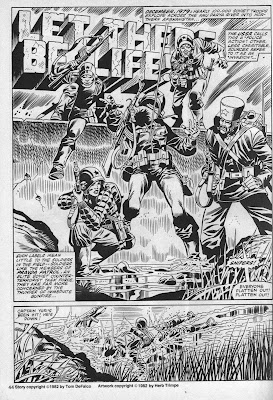1 / 5 Stars
‘Diadem from the Stars’ (March 1977; DAW Book No. 235) is the inaugural novel of the so-called ‘Diadem’ series, which ultimately spanned nine books over the course of 1977 – 1986. The cover artwork is by Michael Whelan.
As the novel opens, the eponymous Diadem is stolen from the ‘planet of the spider-people' by Stavver, the galaxy’s greatest thief. The Diadem is not just a valuable jewel, but a sentient artifact with the ability to confer psi powers upon the individual lucky enough – or unfortunate enough – to wear it.
When the vengeful pursuit by the spider people damages his ship, Stavver is forced to crash-land on the backwater planet Jaydugar. Stavver survives the landing, but loses the Diadem.
The narrative then shifts to the adventures of Aleytys, a teenage girl, and the daughter of a long-vanished spacewoman. Aleytys has been raised since infancy by the tribesman of Jaydugar, from whom she stands out, not just for her physical size and red hair, but also for her self-confidence and defiance of authority, traits uncommon to the women of the native peoples of Jaydugar.
Aleytys also has psi powers that, as the novel opens, she is just becoming aware of – powers that include telepathy and the ability to rapidly heal herself, other humans, and even animals. When threatened, Aleytys is able to wield even stronger powers – powers dangerous to her assailants – and this has generated increasing unease among the tribe that has taken her in.
Circumstances soon force Aleytys to make her own way across Jaydugar to a remote locale where a chance to go off-planet may await. But a young girl traveling by herself, across the harsh and unforgiving landscape of a backward planet, is easy prey for any number of unpleasant people……..
I found ‘Diadem’ to be a dull and unrewarding read, even when making allowances for its status as a First Novel. Much of its failings are due to the author’s desire – clearly inspired by Dune - to over-elaborate on the sociology and anthropology of Jaydugar and its tribes (which are modeled on the Arabs of North Africa). This subjects the reader to a constant stream of invented words and phrases, and detailed expositions on cultural issues, which are a chore to wade through.
It also doesn’t help matters that author Clayton periodically engages in stream-of-consciousness passages associated with the heroine’s moments of Psychic Awareness; while such passages were part and parcel of New Wave era sf writing, they act here to burden, rather than enlighten, the narrative.
When it first was published, ‘Diadem from the Stars’, as well as the succeeding volumes in the series, were praised for breaking new ground with their depictions of independent heroines, as opposed to portraying women as the inevitable girlfriends or concubines common to sf literature at the time. While this may have been true of ‘Diadem’, when all is said and done, it doesn’t deliver much of a story………..perhaps the other volumes are better written and more rewarding, but this one is hard to recommend.


























































.jpg)

















